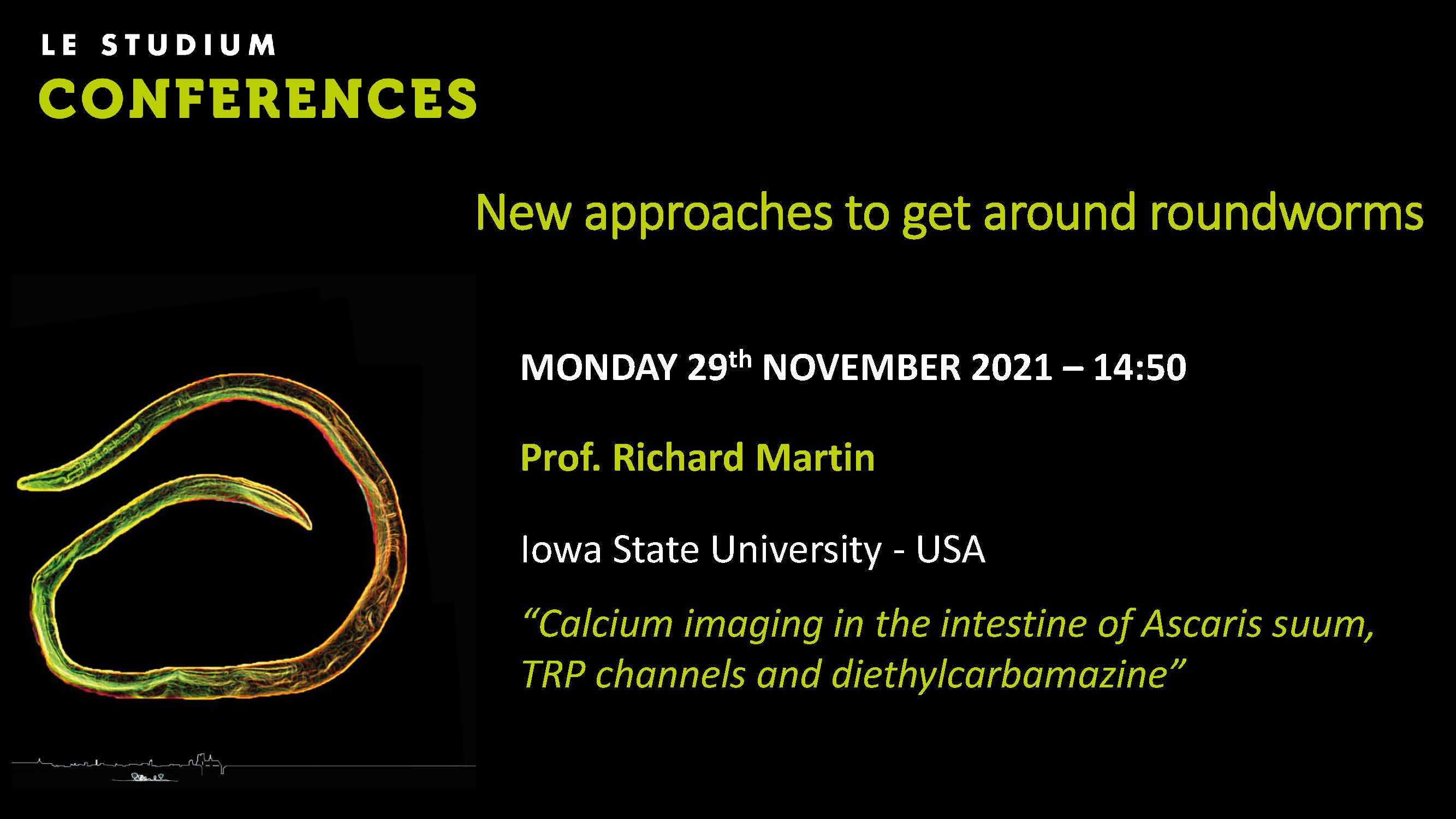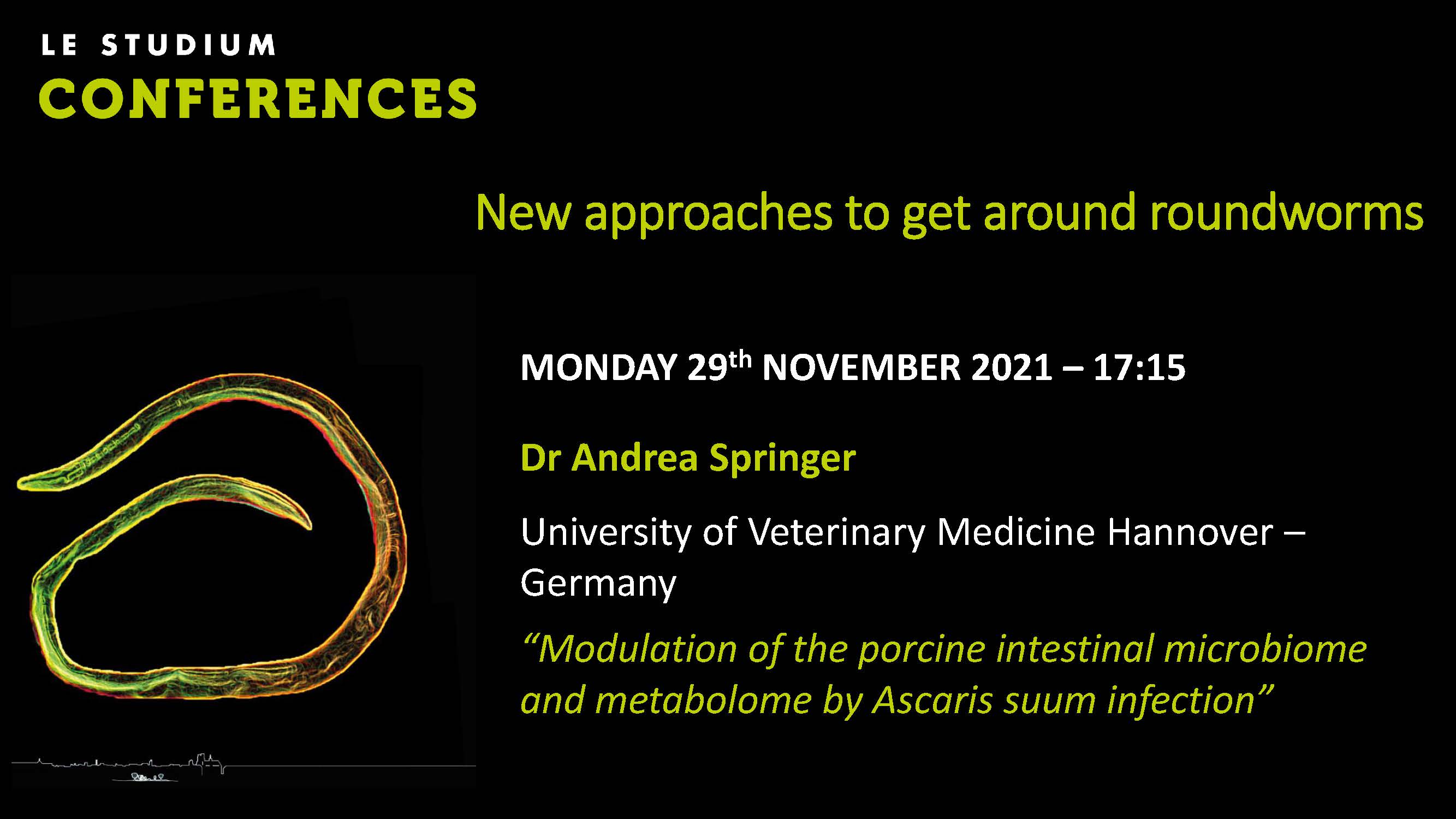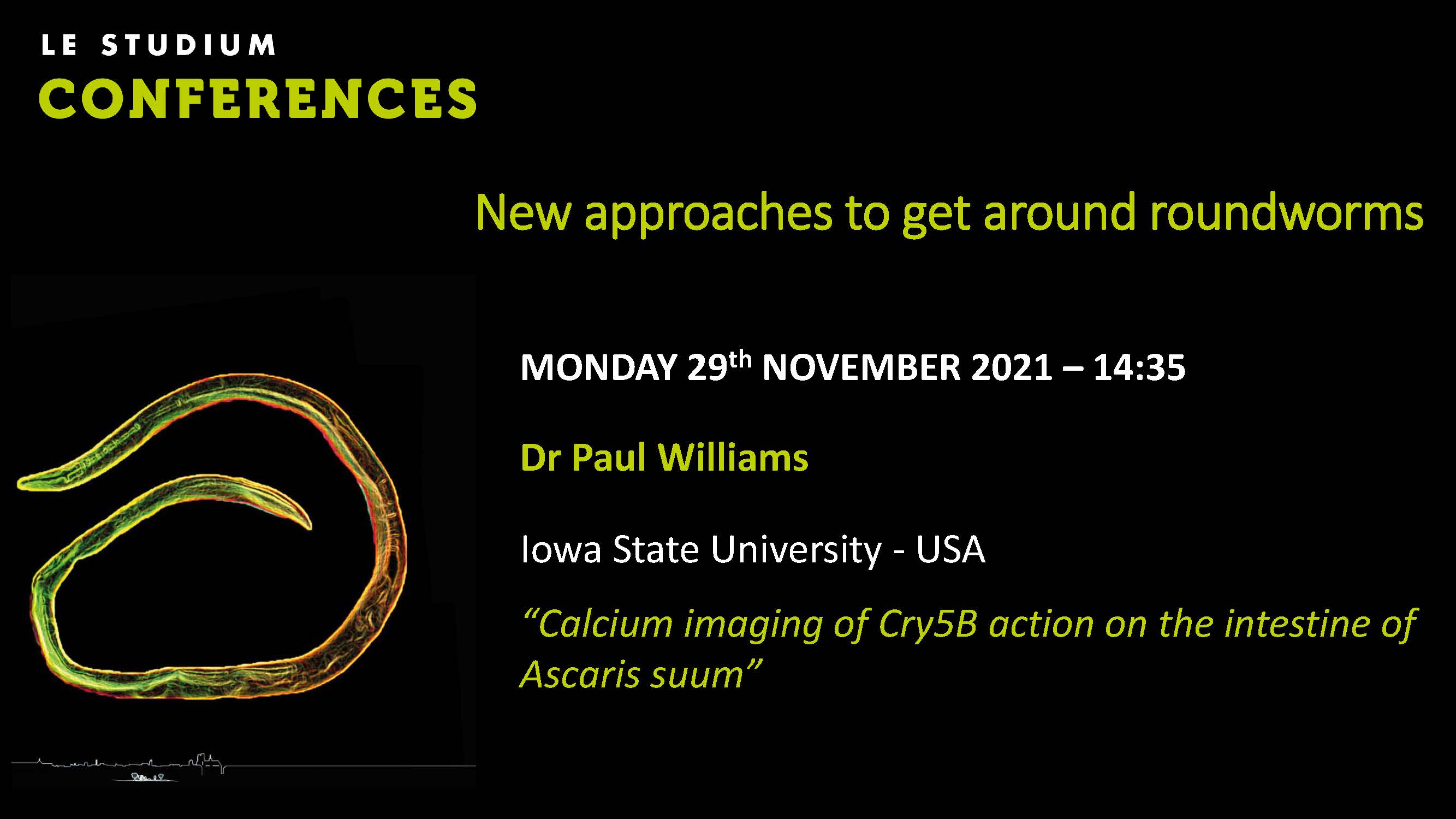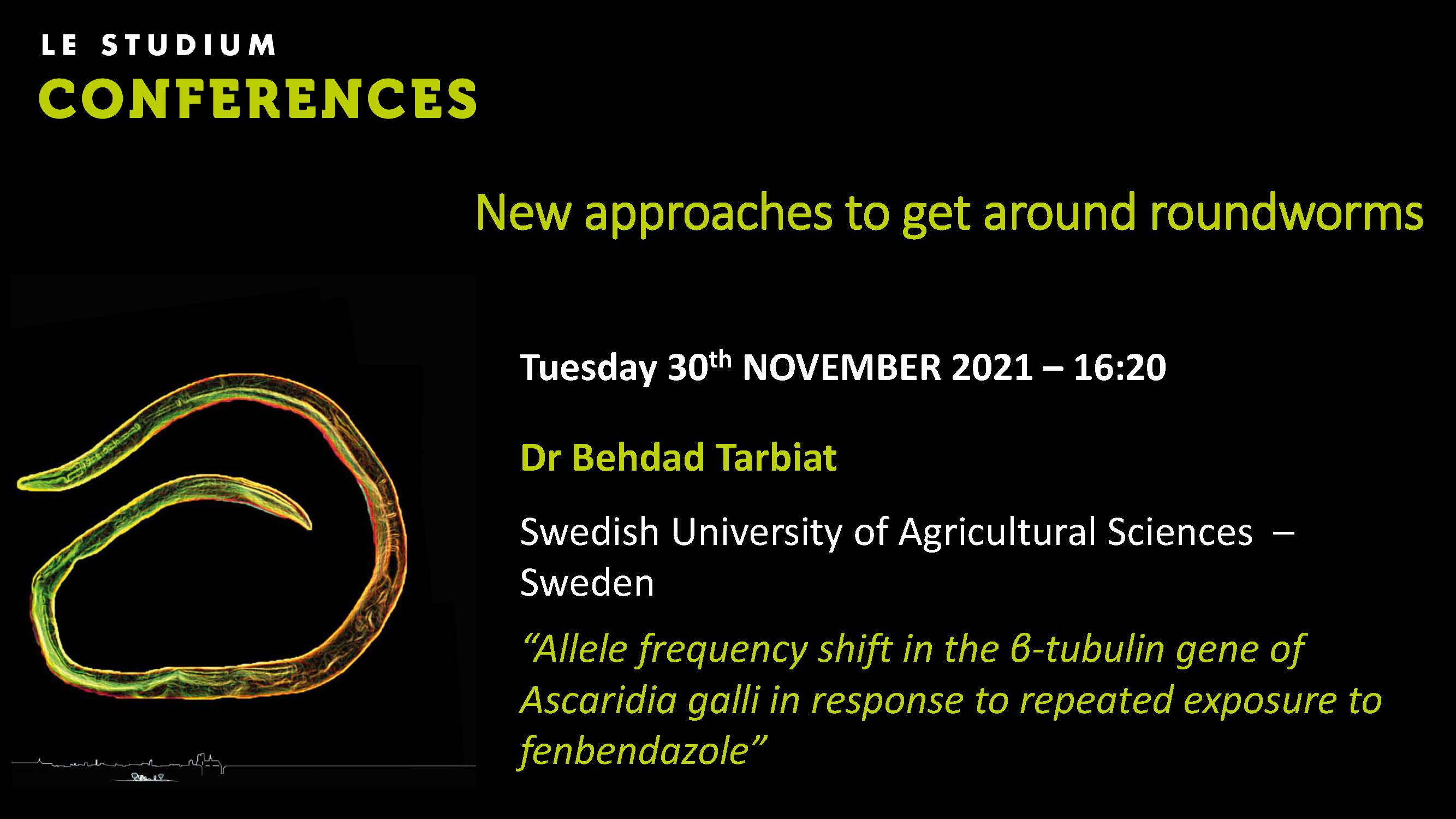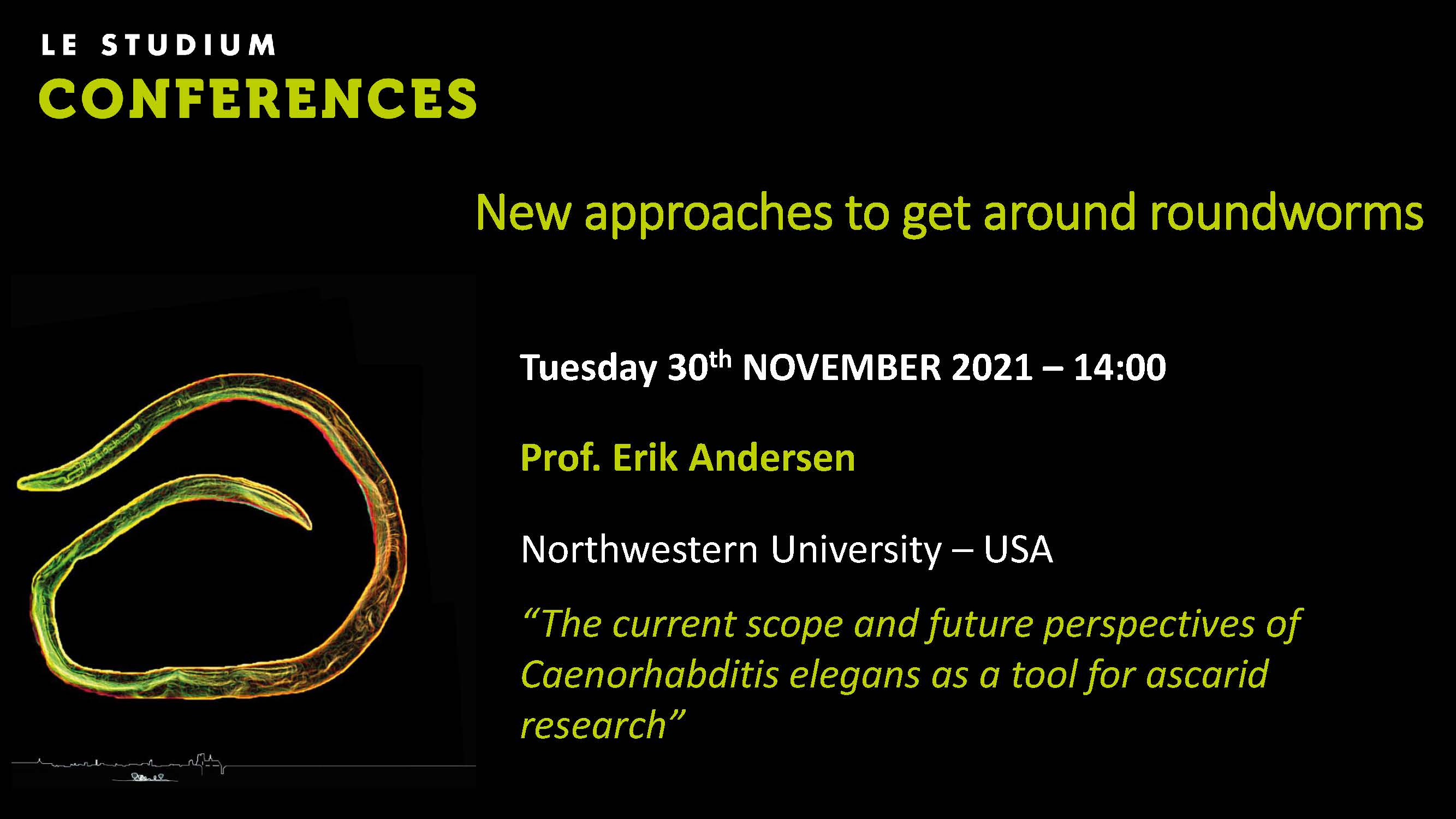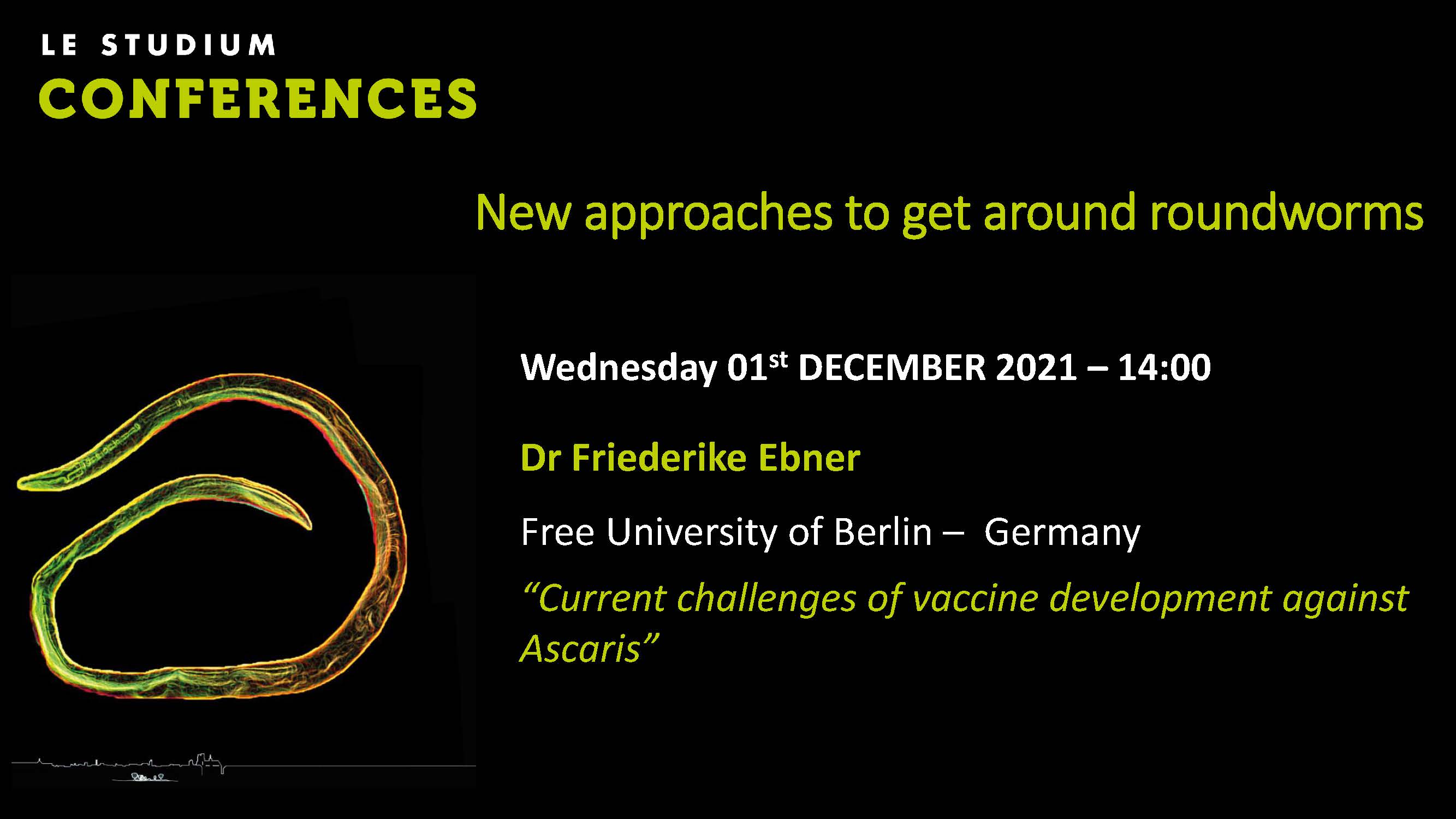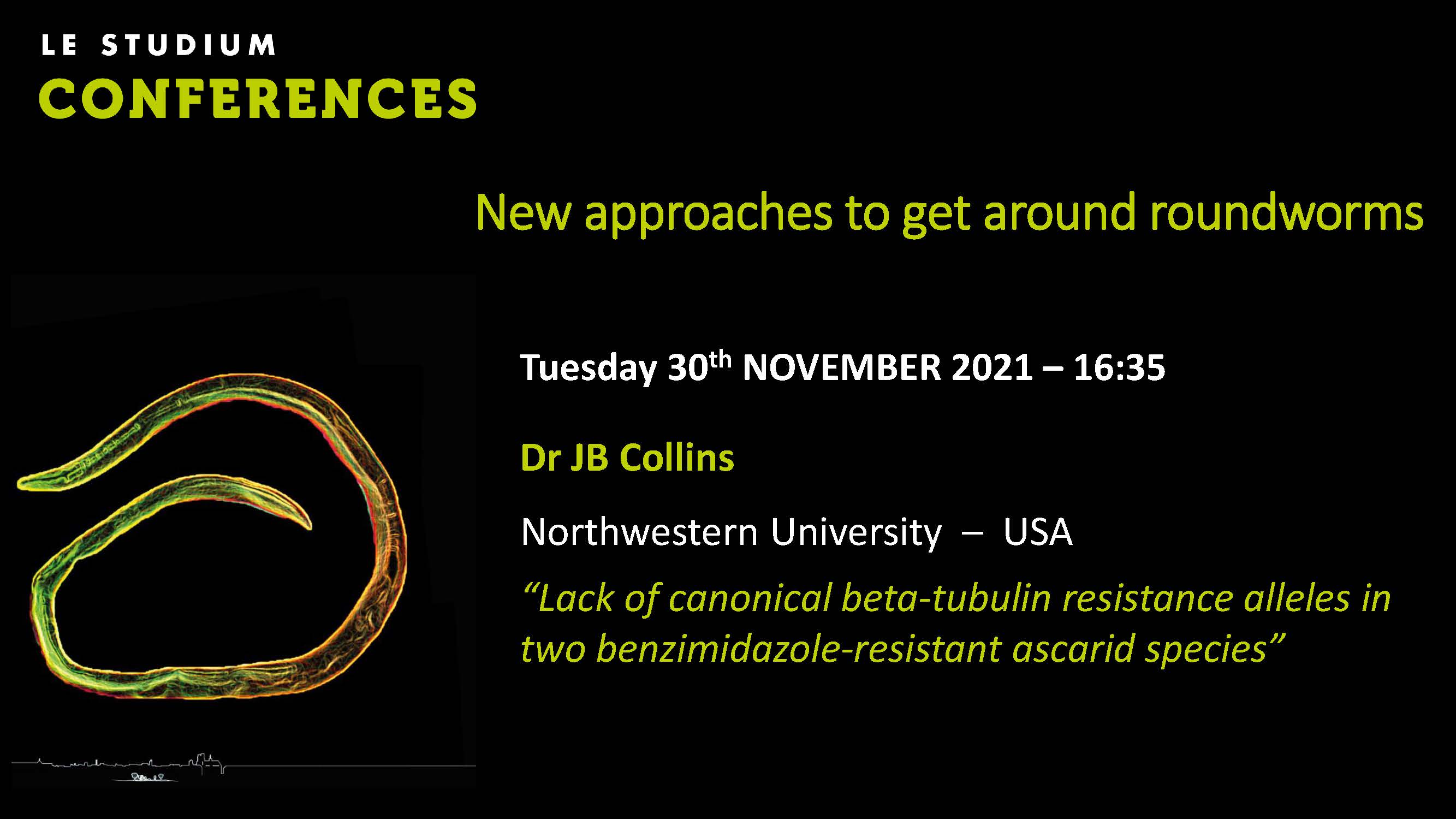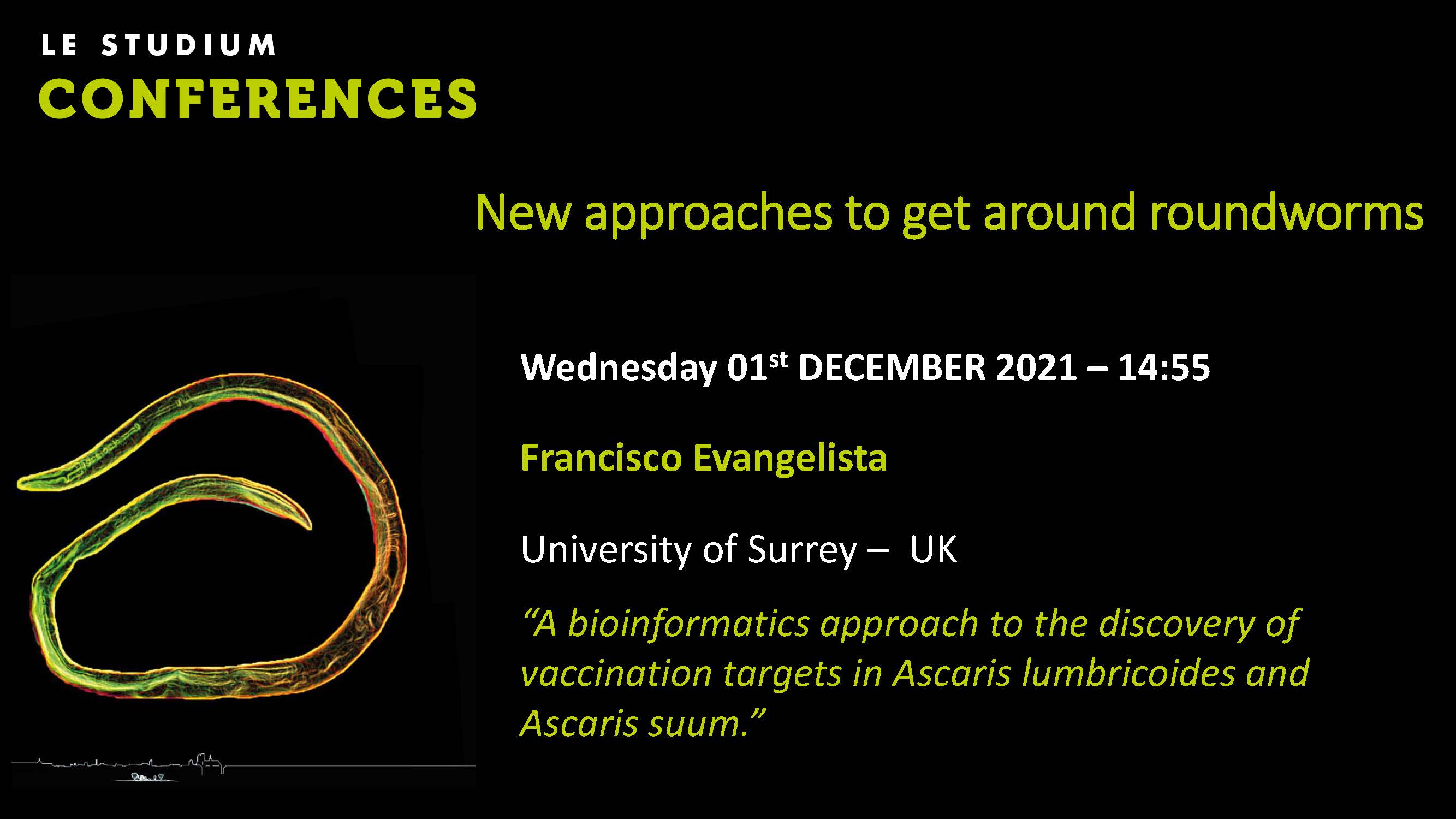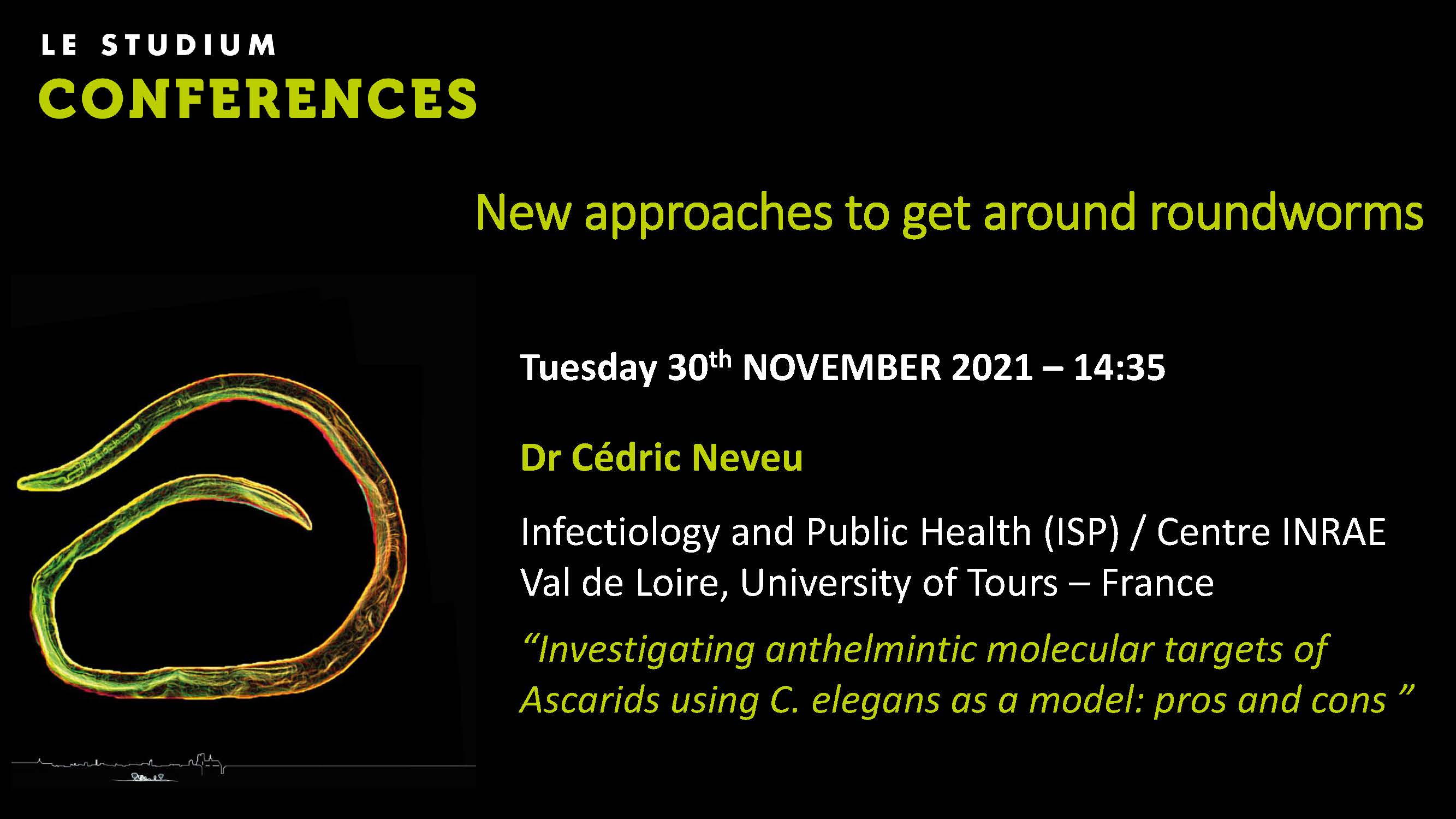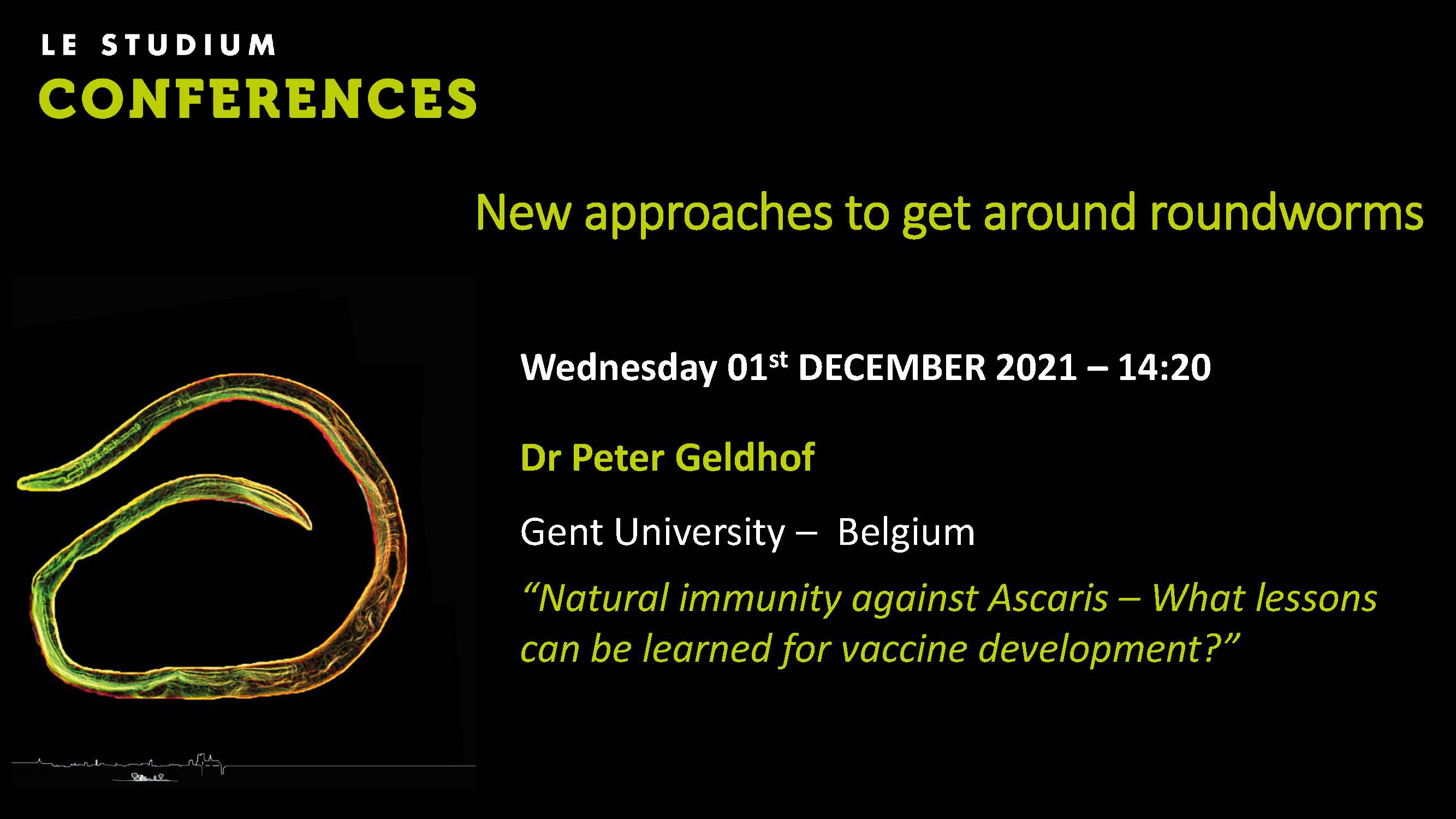Notice
Frida Martin - Exploring the β-tubulin gene family in a benzimidazole-resistant Parascaris univalens population.
- document 1 document 2 document 3
- niveau 1 niveau 2 niveau 3
Descriptif
Benzimidazole (BZ) resistance is rare in ascarids in contrast to strongyle parasites where this resistance is widespread. In strongyles, single nucleotide polymorphisms (SNPs) at codons 167, 198 and 200 in a β-tubulin gene have been correlated to BZ resistance, but little is known about the β-tubulin genes and their possible involvement in BZ resistance in P. univalens and other ascarids. Previously two β-tubulin genes were identified in P. univalens. Here, we present five additional β-tubulin genes as well as the phylogenetic relationship of all seven genes to β-tubulins of other clade III and V nematodes. In addition, the efficacy of fenbendazole for treatment of P. univalens on a Swedish stud farm was studied in 2019 and 2020 using faecal egg count reduction test. Reductions varied from 73 % to 88 %, indicating the presence of a resistant P. univalens population. The emergence of BZ resistance emphasizes the need for development of molecular markers for rapid and sensitive detection of resistant populations. We therefore investigated whether possible SNPs at positions 167, 198 or 200 in any of the β-tubulin genes could be used to distinguish between resistant and susceptible P. univalens populations. Amplicon sequencing covering the mutation sites 167, 198 and 200 in all seven β-tubulin genes revealed an absence of SNPs in both resistant and susceptible populations, suggesting that the mechanism behind BZ resistance in ascarids is different from that in strongyle nematodes.
Thème
Dans la même collection
-
Sara Roose - New insights into the use of serology as a diagnostic tool for Ascaris infections in h…
To monitor and evaluate mass drug administration (MDA) programs for soil-transmitted helminths (STHs) the diagnostic standard is the microscopic detection of STH specific eggs in stool smears (Kato-
-
Prof. Richard Martin - Calcium imaging in the intestine of Ascaris suum, TRP channels and diethylca…
The intestine of nematode parasites is involved in more than digestion, absorption and storage of nutrients. It is involved in vesicular trafficking, ageing, innate immunity, drug metabolism and
-
Prof. Georg von Samson-Himmelstjern - Functional analysis of heterologous expression of Parascaris …
This presentation will provide an overview on recent investigations concerning the P-glycoprotein gene family in the equine roundworm Parascaris univalens. As prominent members of the ATP-Binding
-
Dr Andrea Springer - Modulation of the porcine intestinal microbiome and metabolome by Ascaris suum…
Ascaris suum affects feed conversion and weight gain of pigs, but effects on intestinal microbiota remain largely unexplored. Therefore, the intestinal microbiome and metabolome was assessed in pigs
-
Prof Lindy Holden-Dye - Ascaris physiology and pharmacology -what next? and how?
In this talk I will review the progress in providing insight into fundamental aspects of Ascaris physiology and pharmacology and the experimental approaches that have been adopted and developed to
-
Dr Jeba Jesudoss Chelladurai - P-glycoproteins of Toxocara canis: characterization of expression an…
The interaction of the macrocyclic lactones with P-glycoprotein have been well-characterized in different ascarids and have been implicated in drug resistance. While adult stages of the canine
-
Dr Paul Williams - Calcium imaging of Cry5B action on the intestine of Ascaris suum
Crystal (Cry) proteins from Bacillus thuringiensis are used as effective insecticides. These pore forming toxins act within the midgut of insects killing them. Cry5B, has been found to target and
-
Dr Behdad Tarbiat -Allele frequency shift in the β-tubulin gene of Ascaridia galli in response to r…
Despite global spread of anthelmintic resistance in livestock, there has been little discussion about the development of AR in poultry. Ascaridia galli has become ubiquitous in layers due to the ban
-
Prof Erik Anderson - The current scope and future perspectives of Caenorhabditis elegans as a tool …
Ascarid parasites cause a massive burden on people in the developing world and on veterinary animals worldwide. We use a limited arsenal of anthelmintics to treat these infections. As the use of
-
Dr Friederike Ebner - Current challenges of vaccine development against Ascaris
For more than half a century, scientists have been looking for prevention strategies against Ascarids, however, we still lack fully effective vaccines to protect both humans and veterinary species.
-
Dr JB Collins - Lack of canonical beta-tubulin resistance alleles in two benzimidazole-resistant as…
Management of nematode parasites of veterinary importance has become complicated because of the development of anthelmintic resistance. Resistance to benzimidazoles (BZ) is the most well characterized
-
Prof. Adrian Wolstenholme - C. elegans as a model for ascarid parasites; levamisole receptors
Ligand-gated ion channels provide an excellent test for any expression system and for C. elegans as a model for parasitic nematode species, including the ascarids. They are complex proteins made of
Sur le même thème
-
Dr Andrea Springer - Modulation of the porcine intestinal microbiome and metabolome by Ascaris suum…
Ascaris suum affects feed conversion and weight gain of pigs, but effects on intestinal microbiota remain largely unexplored. Therefore, the intestinal microbiome and metabolome was assessed in pigs
-
Prof. Richard Martin - Calcium imaging in the intestine of Ascaris suum, TRP channels and diethylca…
The intestine of nematode parasites is involved in more than digestion, absorption and storage of nutrients. It is involved in vesicular trafficking, ageing, innate immunity, drug metabolism and
-
Sara Roose - New insights into the use of serology as a diagnostic tool for Ascaris infections in h…
To monitor and evaluate mass drug administration (MDA) programs for soil-transmitted helminths (STHs) the diagnostic standard is the microscopic detection of STH specific eggs in stool smears (Kato-
-
Prof Lindy Holden-Dye - Ascaris physiology and pharmacology -what next? and how?
In this talk I will review the progress in providing insight into fundamental aspects of Ascaris physiology and pharmacology and the experimental approaches that have been adopted and developed to
-
Dr Francisco Evangelista - A bioinformatics approach to the discovery of vaccination targets in Asc…
Background: Ascariasis remains the most prevalent zoonotic helminthic disease affecting both humans and pigs and preventive chemotherapy continues to be the most widespread control method.
-
-
Dr Friederike Ebner - Current challenges of vaccine development against Ascaris
For more than half a century, scientists have been looking for prevention strategies against Ascarids, however, we still lack fully effective vaccines to protect both humans and veterinary species.
-
Prof Erik Anderson - The current scope and future perspectives of Caenorhabditis elegans as a tool …
Ascarid parasites cause a massive burden on people in the developing world and on veterinary animals worldwide. We use a limited arsenal of anthelmintics to treat these infections. As the use of
-
Dr Behdad Tarbiat -Allele frequency shift in the β-tubulin gene of Ascaridia galli in response to r…
Despite global spread of anthelmintic resistance in livestock, there has been little discussion about the development of AR in poultry. Ascaridia galli has become ubiquitous in layers due to the ban
-
Dr Peter Geldhof - Natural immunity against Ascaris – What lessons can be learned for vaccine devel…
Ascaris lumbricoides and A. suum are large roundworm parasites that thrives in the small intestine of humans and pigs, respectively. The control of ascariasis is currently completely reliant on
-
Prof. Adrian Wolstenholme - C. elegans as a model for ascarid parasites; levamisole receptors
Ligand-gated ion channels provide an excellent test for any expression system and for C. elegans as a model for parasitic nematode species, including the ascarids. They are complex proteins made of
-
Dr JB Collins - Lack of canonical beta-tubulin resistance alleles in two benzimidazole-resistant as…
Management of nematode parasites of veterinary importance has become complicated because of the development of anthelmintic resistance. Resistance to benzimidazoles (BZ) is the most well characterized


